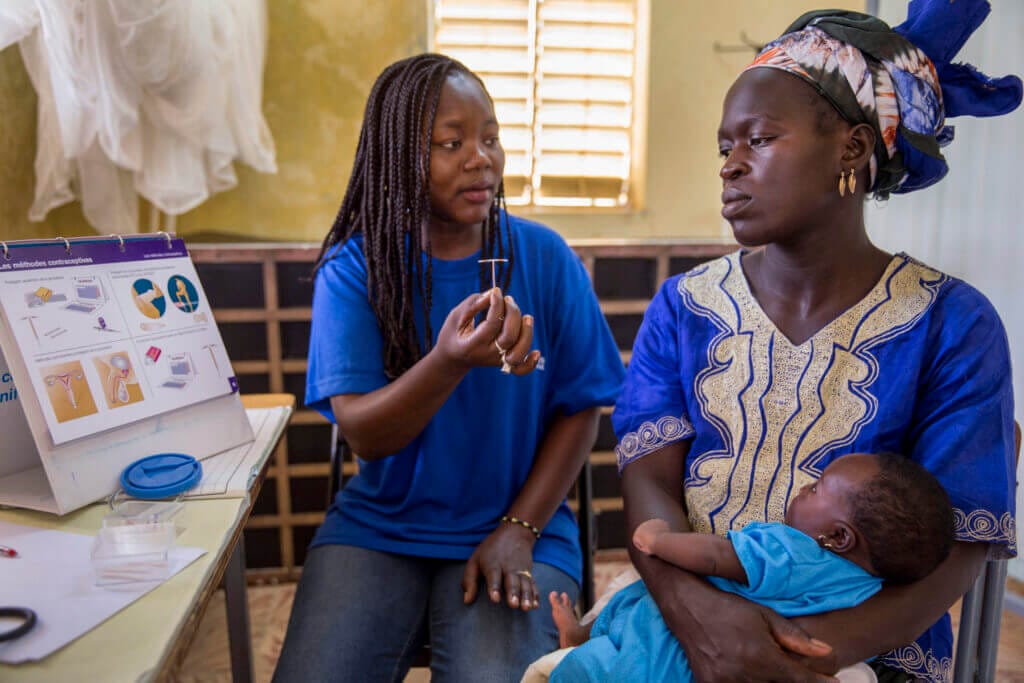
Behavioral science has the power to catalyze progress across the sexual and reproductive health (SRH) sector. Over the last decade, our Global Health team has worked on more than 250 projects in over 30 low-and middle-income countries applying behavioral science to programs across the ecosystem. From reducing provider bias during contraceptive counseling to boosting male engagement around contraceptive use, the need for behavioral science to drive the sector forward is clear.
Despite our successes, women’s opportunity to choose when and how they’d like to start or grow their families continues to be challenged worldwide. So, in order to effectively help women avoid unintended pregnancies, we must work smarter. To reflect on our work thus far and prepare for the future of family planning access, we spoke with key stakeholders across the ecosystem and together have started to build out five bold ideas for how behavioral science can advance sexual and reproductive health right now:
1. Embrace complexity in cross-cutting themes.
Global health has historically operated in silos, often divided by health areas. Yet many challenges have drivers that cut across areas, such as resiliency, community empowerment, and social accountability—themes which often underfunded because they are hard to measure. Behavioral scientists, however, can bring a unique lens to de-mystify these complex, cross-cutting themes by distilling vast literature and practical experience into actionable and measurable programmatic pathways tied to funder priorities. Data generated can clarify and refine these pathways and their impact on other outcomes. Behavioral insights can also be used to develop new programs as we gain more evidence.
2. Tackle upstream behavioral changes in health systems.
Most behavior change work in sexual and reproductive health focuses on individual women and health workers, yet it’s often structural factors that inhibit contraceptive uptake. By using behavioral science to understand the decisions of people in power who ultimately shape the contraceptive options available to others, we can shape “upstream” actors’ behavior to ensure the priorities of local communities and advocates are met.
3. Catalyze social movements and systemic change.
Transformative change in sexual and reproductive health requires effective advocacy to shift public opinion and political will. Yet many advocates haven’t accessed the full range of insights about human behavior to strengthen their work. Behavioral science can make a critical contribution to advocacy by bolstering the effectiveness of tactics advocates employ and accelerating the generation of actionable evidence on effective social movements.
4. Strengthen and scale norm-shifting programming.
Gender and social norms strongly shape women’s reproductive choices and effective programs to address them exist. Programs for which evidence is strongest are multi-level with significant resource demands, making it challenging for them to be sustainably scaled. Behavioral science principles can be used to identify relevant intermediate outcomes, and rapid experiments can highlight the most critical program aspects to shift outcomes and elucidate the most important pathways to change.
5. Optimize the self-care revolution.
As self-care options become more widespread, individual choice must remain the north star. Behavioral science provides us with insights about decision-making that allow us to introduce self-care options in a way that facilitates choice—allowing women to make choices in ways that align with their preferences and goals. Behavioral science can also inform new self-care product development that goes beyond contraceptive methods.
To learn more about these ideas, read our full letter to practitioners (also available in French) or contact our team at gh@ideas42.org.


